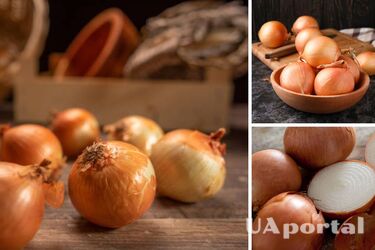Treat the garden and orchard with this solution in the autumn, and forget about plant diseases

In November, gardeners need to prepare their plants and soil well for winter and the next season. If you don't want to spend money on expensive fertilizers and insecticides, try using onion peels.
The GardenLux publication advises collecting onion peels and making special infusions from them, which can serve as a fertilizer and effectively combat pests that overwinter in the soil.
Useful properties of onion peel
This waste contains several nutrients, and their concentration in the husk is even higher than in the vegetable itself. Thanks to its stimulating and regenerative properties, this fertilizer is invaluable in the fight against common diseases and pests of garden crops and even indoor plants.
Read also: Five plants that need little light
How to use onion peel for treatment
Most often, onion husks are used in dry form when planting plants. Experienced gardeners use it as a preventive measure, putting it in the hole when planting potatoes, which helps protect tubers from pests such as wireworms.
However, liquid infusions or decoctions are considered the most effective fertilizers. They are used to prepare working solutions for root feeding of the plant.
These infusions are used not only as fertilizers but also to combat pests such as aphids, mites, sawflies, caterpillars, and rodents. Horticultural crops are treated every 7-10 days.
How to prepare an infusion and decoction of onion peel
Pour 200 g of onion husks into a liter of water and leave it for 24 hours. The mixture is filtered, and the husks are squeezed out and buried under bushes or trees. The filtered infusion is diluted in a bucket of water and used for watering garden or vegetable crops. This solution is also used to treat the soil.
To prepare a decoction of the husk, it is steeped with boiling water (one liter per 200 grams of husk). Then pour it into a saucepan, add another liter of water, and boil for 10 minutes. Strain the resulting solution and dilute it with 10 liters of water.
The resulting product can be stored for up to three days in a cool place, but it is better to use it immediately.
We remind you that most indoor plants are quite safe, but some of them are toxic to children and animals. Leaves, sap, or bulbs can be toxic.
If you want to get the latest news about the war and events in Ukraine, subscribe to our Telegram channel!
